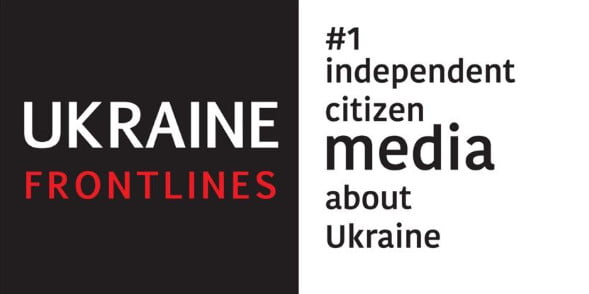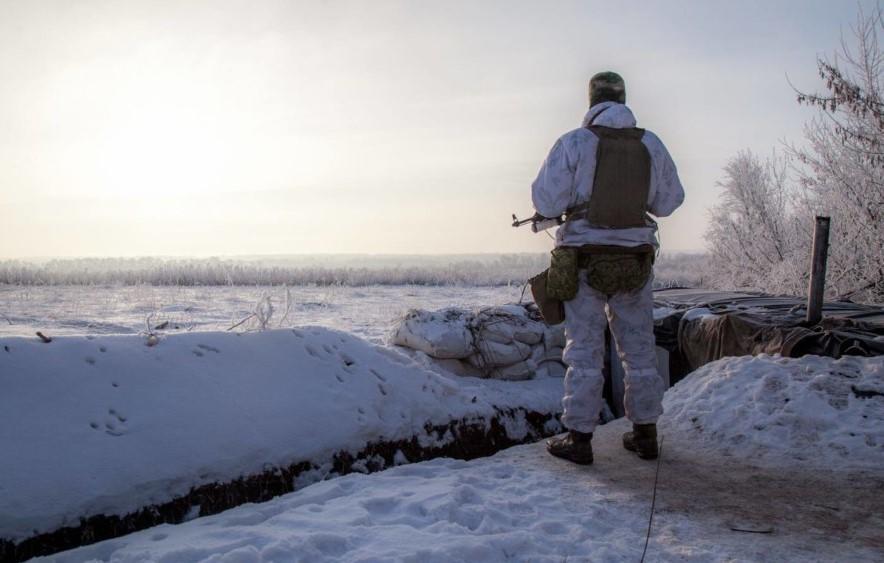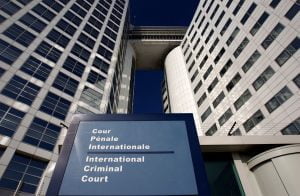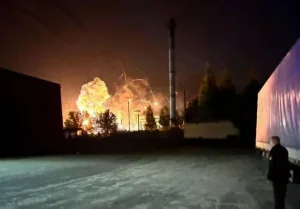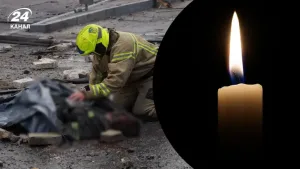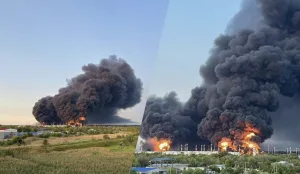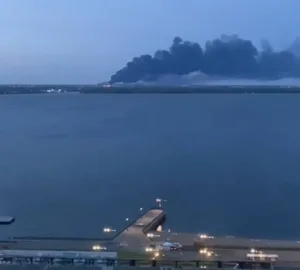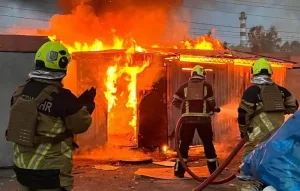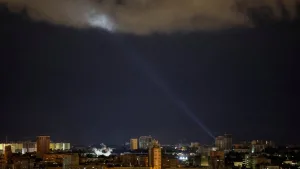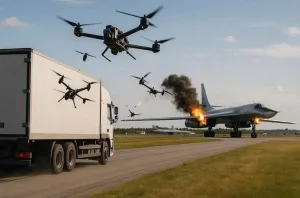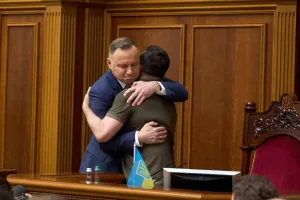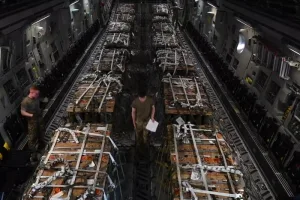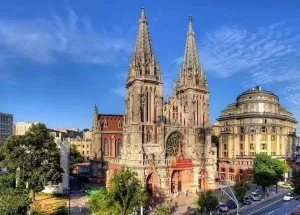What threatens the freezing of the war in Ukraine and what potential the Russian army will have in three years.
Oleksandr Kovalenko’s analysis.
Talks that the war in Ukraine could be put on pause have been going on for years – in fact, they started right after Russia started having trouble getting an offensive in 2022. In most cases, the source of this talk is either Russian spokespeople or Western figures associated with Moscow. But let’s imagine the situation if indeed the war is frozen for some period of time.
What are the real capabilities of the Russian military-industrial complex today and in three years, as well as what threatens to freeze the war in Ukraine and other countries – in today’s material of the joint project of OBOZ.UA and the group “Information Resistance”.
How the aggressor’s MIC works today
You and I have repeatedly heard that active combat operations do not allow Russia to fully recover losses and accumulate resource. It is active combat operations that force the Russian military-industrial complex to work almost entirely to compensate for losses – with insufficient resource spent on accumulation.
For example, if we talk about the production of tanks, the word “production” is no longer correct. Most of the tanks that are now going to the war zone in Ukraine are tanks that have been taken out of storage (preservation), undergone refurbishment, modernization – and eventually became more or less combat-ready. These are modifications of T-90, T-80, T-72, T-62, T-54/55, and there was also information about PT-76. Quantitatively Russia can issue from 100 to 150 tanks per month for war +/- 15-20% depending on the severity of repair work.
The Russians have roughly the same situation with armored combat vehicles (ACVs), which include APCs, BMPs, BMDs and others. And here it is important to pay attention to the fact that with the existing capacities of production and dispatch to the combat zone, the Russian army’s need for armored combat vehicles is three times higher than for tanks. This is due to the fact that, according to the standard configuration of a unit, three or more TBMs are attached to one tank.
Today Russia, which has suffered the heaviest losses in the category of armored combat vehicles – more than 10,500 – simply does not have the ability to fully supply the troops with as much of this equipment as they need for a full complement.
The situation with artillery is no better. For example, the monthly recovery potential of 152-mm, 122-mm, 105-mm towed howitzers and 85-mm division guns averages 350 barrels. A separate category is the self-propelled artillery, which are recovered far less than towed artillery and mortars. All of this is not enough to accumulate potential, except to compensate for zero losses, and even then not always.
At the same time, Russian ammunition companies are reaching the potential of producing 1.5-1.7 million rounds per year. The increase in these figures depends on a variety of external and internal factors, but we will fix this mark without taking into account the variability of the increase. Although it is worth realizing that it will be (given Russia’s ability to circumvent sanctions and find suppliers of the products it needs).
Now let’s assume that the war in Ukraine is frozen for three years. Russia has an opportunity to recover losses from the war and accumulate a greater resource – thanks to the military-industrial complex, although working mainly on repair and modernization, but still working many times more intensively than before 2022.
Russia’s potential in three years
Given the current capabilities, in the event of a complete halt in hostilities, the potential of the Russian army in three years will be as follows:
Tanks – from 3,600 to 5,400. That is quantitatively the same as as of February 23, 2022 and even more – almost twice as much. This will allow to fully recover losses from 2022 and form new units.
AFVs – about the same number as tanks – 3600-5400, which will not allow to restore losses from 2022, but will restore combat effectiveness of units and staff the newly formed ones.
Artillery – only for towed artillery the accumulation rate will be 11-12,500.
Shells – in three years Russia will be able to accumulate more than 5 million rounds, which will allow it to maintain a stable daily fire rate of 14,000 rounds for a year or to conduct an offensive with the support of a total fire wall of 60,000 rounds per day for three months.
I also did not add to this list Russia’s ability to produce cruise missiles such as the X-101/555, which in three years will have a stockpile of more than 2,200, and sea-based Kalibr cruise missiles from 1,000 to 1,500.
Did not mention the Shahed-136 kamikaze drones, the production of which Russia is persistently trying to bring to a serial level, but taking into account the current supply in three years the ROV will have at least 9 thousand.
Of course, there is a nuance in these calculations, consisting in the fact that Russia today simply does not physically have such a quantity of Soviet equipment in warehouses, suitable for restoration to a combat-ready state. But let’s be absolutists and start from these figures.
So, Russia will have all this in three years of freezing the war in Ukraine.
Now let us consider how Russia can use this potential and against whom in the first place.
Unquenchable revanchism and threats
First of all, the threat will come from Ukraine, which is not surprising. And given the existing potential, where will the strikes of Russian occupation troops be directed first? It is more than obvious that, in addition to intensifying hostilities, it will be the south.
For Russian propaganda, the south, namely Kherson, Nikolaev and Odessa, has long since degenerated into degraded sacralization. But if we do not go into the details of the perennial narratives for the marginalized, the main goal in this direction for Moscow is to completely block Ukraine’s access to the Black Sea and obtain a land corridor to Transnistria.
This, in turn, raises the question of security for Moldova, which, after the “reunification” of the tumor and rudimentary, will undoubtedly become Russia’s next victim – with all the ensuing consequences.
In the Black Sea, Russia will regain its criminal control over the water area and by inland waters will be able to safely reinforce its presence with an additional group of warships.
In addition, revanchism can spread to other countries and regions near Russia, such as the South Caucasus. Russia could seize the territory of Georgia by force, enter Armenia and solve the issue of regaining control over the region.
And this scenario is as realistic as the scenario of Russia’s invasion of the Baltic states. Lithuania, Latvia and Estonia are in the same risk zone as Moldova, Georgia and Armenia.
Conclusions
A respite, a pause, a freezing of the war (even a short-term one) – all this will lead to the fact that Russia will be able to build up forces to continue the bloodshed with a second breath, and it is not excluded that in several directions at the same time.
From this we can conclude in whose interests those “heralds of peace” who call for a ceasefire are acting. After all, until Russia is finally exhausted and defeated, giving it a chance for respite is a suicidal initiative.
Tags: ceasefire Russia russia ukraine war